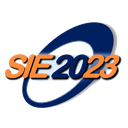Executive Secretary

XX International Symposium of Electrical Engineering
SIE 2023
Abstract
Energy efficiency is essential due to the high impact on the charge for consumers and electricity generation. That's why the projection of Energy Management Systems (EMS) based on IoT technologies in Smart Buildings is growing. These systems allow optimization of the use of distributed energy and the quality of service in the installations. The energy crisis, the absence of standardization of IoT technologies, and the difficulty of accessing these community platforms in a country like Cuba impose a particular analysis of this kind of solution. In the present work, a detailed study of the state-of-the-art and main trends of architectures used for EMS over IoT is realized. The article proposes an IoT platform for an EMS in smart buildings, which is supported in distributed applications through virtualization over Docker containers and the orchestration of modules and microservices as part of the interoperability of the platform. The results reveal that MING (Mosquitto + InfluxDB + Node-RED + Grafana), as the proposed solution, is the most appropriate compared to the rest of the platforms identified as a trend, taking into account the general and specific requirements applicable in smart building environments in Cuba.
Resumen
La eficiencia energética se hace imprescindible debido al alto impacto que tiene en los costos, tanto para consumidores como para la generación eléctrica. Es por ello que, en la actualidad, crece la proyección de Sistemas de Gestión Energética (SGE) basados en tecnologías IoT en edificios inteligentes. Dichos sistemas permiten optimizar el uso de la energía distribuida y la calidad del servicio en las instalaciones. La crisis energética, la falta de estandarización de tecnologías IoT y la dificultad de acceso a estas plataformas comunitarias en un país como Cuba, imponen un análisis particular de este tipo de soluciones. En el presente trabajo se lleva a cabo un estudio del estado del arte de las principales tendencias de arquitecturas utilizadas para los SGE sobre IoT. El artículo propone una plataforma IoT para un SGE en edificios inteligentes, la cual se soporta en aplicaciones distribuidas por medio de la virtualización sobre contenedores en Docker y la orquestación de módulos y microservicios como parte de la interoperabilidad de la plataforma. Los resultados revelan que MING (Mosquitto + InfluxDB + Node-RED + Grafana), como solución propuesta, es la más adecuada en comparación con el resto de las plataformas identificadas como tendencia, teniendo en cuenta los requisitos generales y específicos aplicables en entornos de edificios inteligentes en Cuba.
About The Speaker

Ing. Arley Bosch Quirós

Discussion

